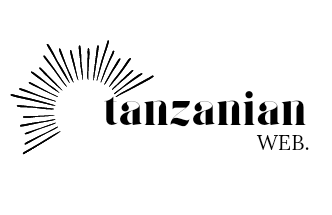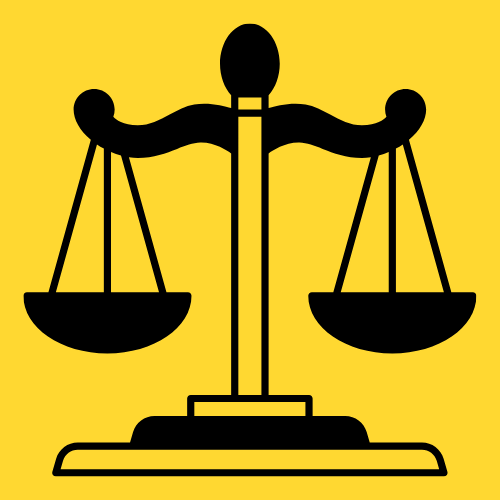“100”, Aptitude Test Questions and Answers for Manager of Consultancy Services at TEMESA.
ABSTRACT
This practice set of 100 questions is
designed to prepare candidates for the position of Manager of Consultancy
Services at TEMESA. The questions cover core areas including consultancy
services management, project planning and monitoring, risk assessment,
financial control, stakeholder engagement, ethical conduct, performance
measurement, client relationship management, team leadership, and public
procurement. Each question is accompanied by a clear answer and rationale,
emphasizing practical decision-making and problem-solving skills required for
effective managerial performance. The set combines scenario-based, conceptual,
and applied questions to simulate real-world managerial challenges, ensuring
candidates can demonstrate both knowledge and strategic thinking in their
roles.
Prepared
by: A group of consultancy officer
Compiled
by Johnson Yesaya Mgelwa
A
lawyer based in Dar-es-salaam.
0628729934.
Date:
September 10, 2025
Dear applicants,
This collection of questions and answers
has been carefully prepared to help all of you to understand the key areas
tested during the interview. The goal is to provide a useful, and practical
study guide so you can all perform confidently and fairly in the selection
process. I wish you the best of luck, and may this resource support you in
achieving success!
Warm
regards,
Johnson
Yesaya Mgelwa
For
Personal Use by Applicants Preparing for the Manager of Consultancy Services at
TEMESA
ALL
QUESTIONS COMPILED TOGETHER.
1. Which of the following best describes
the main role of a Manager of Consultancy Services at TEMESA?
A. Supervising office clerks in daily routines B. Overseeing consultancy
projects to ensure quality, timeliness, and budget compliance C. Preparing
payroll for the consultancy staff D. Inspecting electrical equipment in
workshops
Answer: B
Rationale: The key duty of a Manager of Consultancy
Services is overseeing consultancy projects from initiation to completion,
ensuring delivery within scope, time, cost, and quality standards. Unlike
clerical supervision or payroll duties, their main responsibility is managing
consultancy services strategically and technically.
2. A critical responsibility of
consultancy services management is risk mitigation. Which risk is most commonly
associated with consultancy projects?
A. Lack of qualified engineers B. Frequent power blackouts C. Delays and budget
overruns D. Inability to recruit accountants
Answer: C
Rationale: Consultancy projects often face risks
such as time delays and budget overruns due to poor planning, resource
constraints, or client-related issues. These are more central to consultancy
project risk than challenges like power outages or recruitment problems.
3. When collaborating with engineering
teams to set project requirements, the Manager should prioritize:
A. Approving annual leave schedules B. Preparing procurement contracts C.
Defining performance metrics and quality standards D. Developing office
furniture layouts
Answer: C
Rationale: Effective consultancy project management
requires clearly defining performance metrics and quality standards at the
onset, ensuring teams have measurable goals. Other tasks like contracts or
office layouts are peripheral to the Manager’s core role.
4. In developing strategies to acquire new
clients, which approach is most effective?
A. Focusing only on government tenders B. Building strong client relationships
and showcasing successful projects C. Relying solely on word-of-mouth D.
Running unplanned marketing campaigns
Answer: B
Rationale: A strategic approach involves building
lasting relationships with potential clients, leveraging successful past
projects as evidence of capacity. Aggressive marketing without relevance or
depending solely on tenders is not sustainable.
5. Which of the following best
communicates project progress and financial performance to TEMESA management?
A. Regular written progress and financial reports B. Verbal briefings C.
Project posters D. Employee surveys
Answer: A
Rationale: Rationale: For accountability and
informed decision-making, a manager must prepare structured written reports on
project progress and financial performance. These provide objective data
compared to verbal updates or unrelated documents.
6. Standardized processes in consultancy
projects primarily aim to:
A. Limit creativity B. Improve consistency and quality across projects C. Avoid
regulatory oversight D. Reduce staff workload
Answer: B
Rationale: Establishing standardized processes
creates consistency, quality assurance, and efficiency across projects. This
improves reputation and client trust, unlike reducing salaries or avoiding
monitoring which are irrelevant.
7. In consultancy project management,
“scope creep” refers to:
A. Over-reliance on subcontractors B. Unauthorized expansion of project
objectives beyond initial agreement C. Reduction of staff to cut costs D.
Client withdrawal from a project
Answer: B
Rationale: Scope creep occurs when additional tasks
or deliverables are added without proper approval, causing delays and cost
overruns. It is a well-known project management risk.
8. The effectiveness of consultancy
services largely depends on:
A. Having the largest office building B. Focusing only on engineering designs C.
Efficient planning, client engagement, and risk management D. Reducing
reporting to management
Answer: C
Rationale: Strategic planning, collaboration, and
risk control determine consultancy success.
9. In financial performance, “budget
variance” means:
A. Extra client requirements B. The number of engineers hired C. The difference
between planned and actual costs D. The total project duration
Answer: C
Rationale: Budget variance measures whether a
project is overspending or underspending by comparing actual costs to the
planned budget. It is a key financial control metric.
10. To maintain ethical standards, a manager
must avoid:
A. Transparent procurement B. Conflict of interest in decisions C. Professional
registration of engineers D. Confidentiality agreements with clients
Answer: B
Rationale: Ethical conduct requires avoiding
conflicts of interest, as these compromise objectivity and damage trust.
Transparency, registration, and confidentiality are positive practices.
11. Which performance indicator best shows
project success?
A. Size of consultancy office B. Project delivered on time, within budget, and
meeting quality standards C. Number of meetings attended D. Frequency of staff
promotions
Answer: B
Rationale: True success in project management is
measured by the “iron triangle”: time, cost, and quality. Reports and meetings
support this but do not equate to success themselves.
12. Client relationship management
requires:
A. Building trust through consistent communication and delivering value B.
Keeping clients uninformed to reduce complaints C. Ignoring feedback D. Relying
solely on technical paperwork
Answer: A
Rationale: Strong client relationships are built on
trust, communication, and meeting client expectations. Ignoring clients
undermines confidence and repeat business.
13. The best way to measure consultancy
team performance is through:
A. Client rumors B. Clear KPIs linked to outcomes C. Random staff interviews D.
Informal observation
Answer: B
Rationale:
Performance is objectively evaluated using Key Performance Indicators (KPIs),
such as meeting deadlines, budget adherence, and quality standards, not rumors
or informal impressions.
14. Consultancy service marketing should
primarily focus on:
A. Reducing service fees drastically B. Celebrity endorsements C. Demonstrating
expertise and success stories D. Decorating offices
Answer: C
Rationale: Marketing in professional consultancy
relies on demonstrating capability, expertise, and success, which attract
clients more effectively than superficial strategies.
15. A consultancy project delay due to
late delivery of materials is an example of:
A. Schedule risk B. Legal risk C. Ethical risk D. Market risk
Answer: A
Rationale: Project delays due to late supplies fall
under schedule risks, as they directly affect timelines. Legal, ethical, and
market risks are different in nature.
16. In public sector consultancy,
stakeholder engagement is important because:
A. It reduces engineer needs B. It avoids regulations C. It eliminates
reporting requirements D. It builds trust, transparency, and project support
Answer: D
Rationale: Public projects demand stakeholder
engagement to ensure buy-in, accountability, and smoother implementation.
Ignoring stakeholders risks resistance and project failure.
17. Which financial tool is used to
forecast project cash flow?
A. Safety audit B. Time-motion study C. Cash flow projections D. Social media
analysis
Answer: C
Rationale: Cash flow projections estimate expected
inflows and outflows, enabling managers to anticipate shortfalls and plan
financing. Other tools serve unrelated purposes.
18. If a project consistently exceeds
budget, the Manager should first:
A. Terminate the client contract B. Reduce staff salaries C. Ignore until final
audit D. Review cost management and identify overruns
Answer: D
Rationale: The correct managerial response is
analyzing cost overruns, identifying root causes, and taking corrective
measures. Sudden termination or ignoring issues is unprofessional.
19. A good strategy for expanding
consultancy services is:
A. Avoiding new markets due to risk B. Cutting quality to reduce costs C.
Relying on one client only D. Partnering with reputable local and international
firms
Answer: D
Rationale: Strategic partnerships provide
credibility, resources, and market access, thereby strengthening consultancy
growth. Avoiding markets or cutting quality harms sustainability.
20. “Value for money” in projects means:
A. Ignoring client satisfaction B. Spending less regardless of results C.
Paying the lowest wages possible D. Achieving efficiency, effectiveness, and
economy
Answer: D
Rationale: “Value for money” balances cost efficiency with quality and outcomes, ensuring the client gets maximum benefit. It is not just about cheapness.
📘 Get the Full Aptitude Test Questions PDF through your Gmail (Questions 1–150)
You’ve just accessed the first 20 questions. Get the full set of 100 expertly prepared aptitude test questions for the Manager of Consultancy Services at TEMESA Plus additional 150 questions and answers for the Regional Manager Position at TEMESA.
To get access to the full PDF with both positions, please make a payment of Tsh 20,000 to the LIPA numbers below:
After payment, please send a text message to notify us of your payment:
⚠️ Important Notice
- The PDF will be watermarked with your name and phone number and protected for personal use only.
- Redistribution, sharing, screenshotting, or copying the contents is strictly prohibited. When you share unlawfully, your name and phone number are visible and easy to trace as you leaked a document to other third parties.
- Legal action may be taken against the misuse of this material.
Thank you for supporting quality content. Best of luck in your interview preparation!


%20(10).png)





0 Comments
PLACE YOUR COMMENT HERE
WARNING: DO NOT USE ABUSIVE LANGUAGE BECAUSE IT IS AGAINST THE LAW.
THE COMMENTS OF OUR READERS IS NOT OUR RESPONSIBILITY.